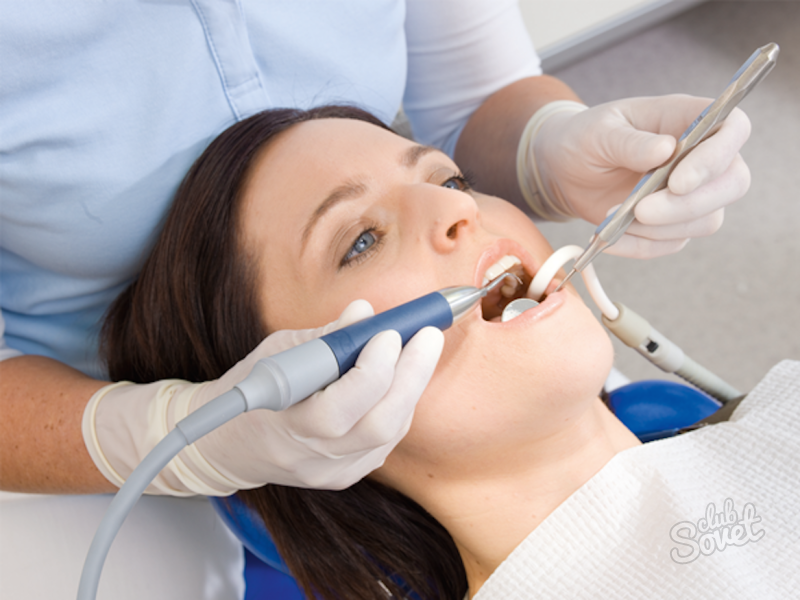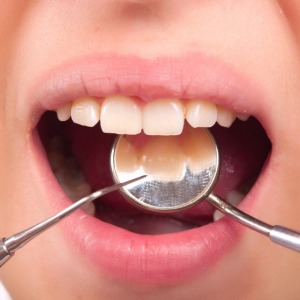The tooth in the gum is a pathology that meets more and more often. In dental terminology, this problem of dentition development has a keen name - the retention of the tooth. What does this condition are really considered by experts as a serious deviation from the norm, since it is not just a cosmetic defect. Therefore, we consider in detail what the retention of the tooth is why it arises and why necessarily requires treatment.
What is the retention of the tooth
The state when the tooth did not cut forward in the time of nature, received the name of the tooth. Such a tooth may not be visible at all on the surface of the gum or barely noticeable, and it can cut through it a little. Most often, permanent teeth are already exposed to such pathology: fangs, wisdom teeth, lateral incisors of the upper jaw (the second front teeth from the center).

What are the types of retention tooth
Depending on how much the tooth was able to "break through" through the tissues of the gums, retention can be two types:
- Partial (or semedy tooth). Part of the tooth crown is visible at visual inspection of the jaw.
- Full. Here, the tooth is completely hidden with a gum (or bone cloth of jaws), not visible and does not fit during the examination.
In this case, the tooth can be placed both vertically with respect to the jaw and horizontally with an inclination inside (pagan-angular arrangement) or outward (penetrating-angular).

Why the retention of the tooth
The reason that the tooth literally stuck in the gum or bone tissue may be both a disease or anatomical anomaly and the omission of parents regarding the control of the state of the teeth of his child.
If you touch the reasons why teeth are "stuck" in the gum, more specifically, among them the following states can be distinguished:
- General exhaustion of the body as a result of infectious diseases or chronic diseases.
- Ethrenal and / or defective nutrition of the child.
- Problems with "predecessors", that is, with milk teeth (early deletion, replacement delay or root resorption).
- Obstacles to the growth of the tooth (adjacent, densified teeth or their roots, dense tissue of the dental pouch).
- Problems with the growing teeth or the jaw themselves (incorrect descendants of the teeth or the pathology of the jaw).
- Heredity.
Considering that the "roots" problems go into childhood, all parents need to strictly control how well the teeth are dispersed with their babies. Special attention is required by the situation when the delay of the appearance of the teeth is more than six months or the milk teeth "left" before the deadline (it was knocked out, broken or removed as needed).

How does the retention of the tooth
Do not notice such pathology as a tooth in the gum, quite difficult:
- A defect in the dentition is observed (there is no teeth at all or it disperses not where it should).
- The gums at the location of the edema's tooth, hyperemic (has red) and may be painful, especially during tacking.
- Temperature can increase, accompanied by a sense of general ailment.
- With partial replay, the tip of the tooth is noticeable above the surface of the gums and felt during tackling, surrounding its fabrics from the edema, are inflamed and painful.
Complete retention hides the tooth at all, so it is possible to obtain all the data on its location and condition only by X-ray examination. In general, if you touch the diagnosis, then it is x-ray that can argue all the points over "E": a constant tooth in the gum or dairy, its location and direction of growth, the condition of bone tissue around it and the presence of a cyst.

Treatment of a retinated tooth
The main thing is, what I want to make the emphasis in the treatment of the retention of the tooth are individuality. That is, in each specific case, the method of solving the problem of the tooth in the gum will be chosen exclusively by a dentist (more likely, several specialists from different directions of dentistry) and solely on the basis of an existing clinical picture and the results of an X-ray survey:
- If the teething is normally located with the right direction of growth of the tooth, only the dense tissue of the gums is prevented, the doctor will simply produce its dissection (above the tooth) under local anesthesia.
- If the fangs or cutters cut through partially (at the same time, the angle of their inclination is not more than 35 degrees), and the jaw is still in the period of growth, the problem can be solved by the bracket system (after complete surgical output of the tooth body).
- If the tooth in the gum is incorrect, its neck has signs of destruction, the inflammatory process captures the zone of the retinated tooth and the teeth located next to it - it is removed.
In most cases, it is the removal of a retinated tooth that helps to drastically solve the problem and prevent all its possible consequences.

Immediately, we note that ignoring pathology called the "retention of the tooth" can lead to serious complications in the form of cysts, disorders of teething or resorption of roots located near the aesthetic defects. Therefore, follow the development of your child and do not pull with a visit to the dentist.






























